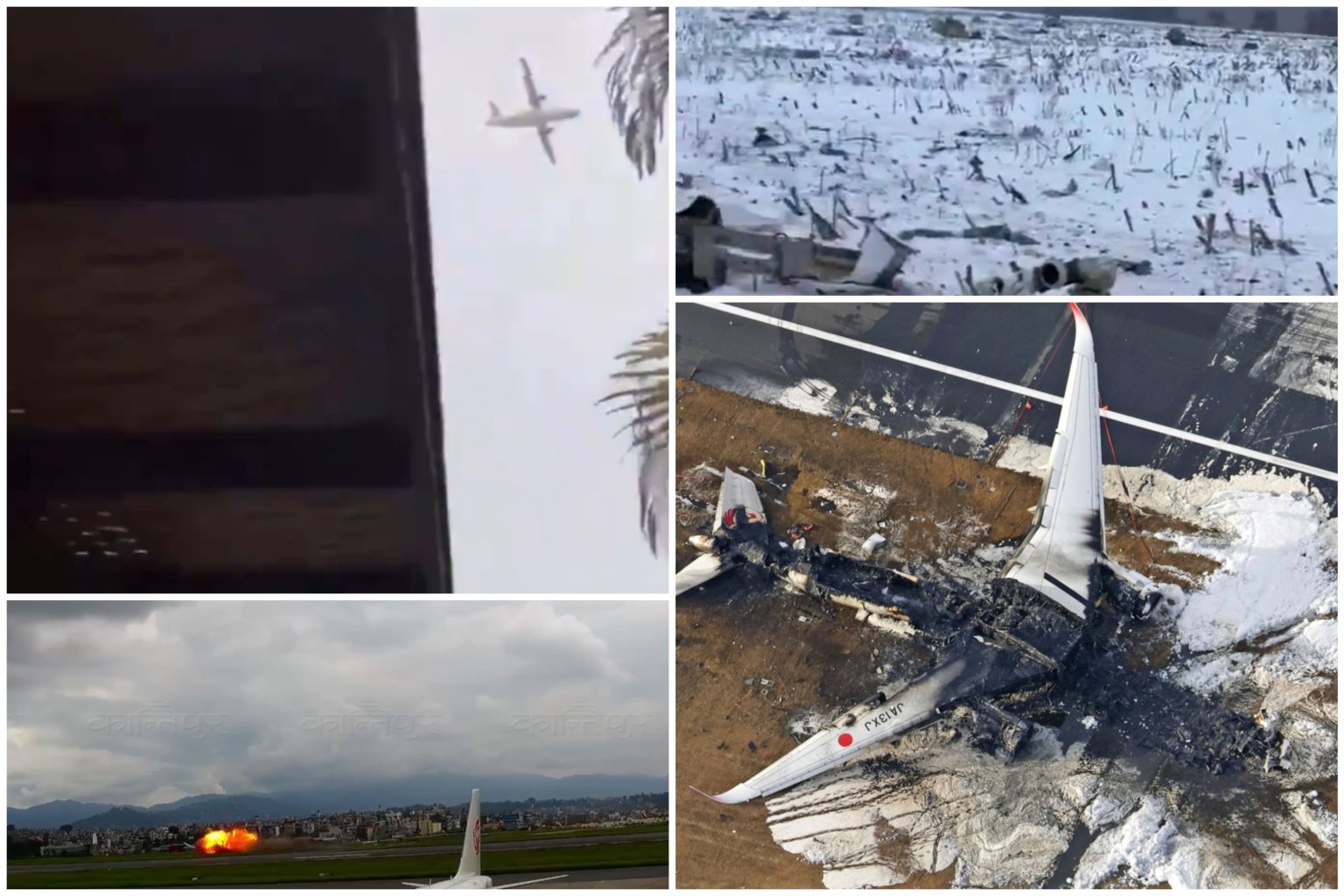The year 2024 witnessed a series of devastating aviation accidents across the globe, each tragedy underscoring the inherent risks of air travel and prompting renewed scrutiny of safety protocols and crisis management strategies. From runway collisions to mid-flight disasters, these incidents served as stark reminders of the fragility of human life in the face of mechanical failure, human error, and unpredictable weather conditions. The loss of life in these accidents has left an indelible mark on the families and communities affected, prompting investigations and calls for enhanced safety measures to prevent future tragedies.
The year began with a runway collision at Tokyo’s Haneda Airport on January 2nd. A Japan Airlines Airbus A350 collided with a Japan Coast Guard aircraft during landing procedures. While all 379 passengers on the commercial airliner were safely evacuated, the five crew members aboard the Coast Guard plane tragically lost their lives. The incident highlighted the critical importance of clear communication and coordination between aircraft and ground control to prevent such collisions, especially in busy airport environments. Investigations into the incident focused on determining the sequence of events leading to the collision and identifying any systemic failures that contributed to the tragedy.
Just weeks later, on January 24th, a Russian Ilyushin Il-76M transport aircraft crashed in the Belgorod region of Russia, resulting in the deaths of all 74 people on board. Among the victims were 65 Ukrainian prisoners of war. While Moscow claimed the aircraft was shot down by a Ukrainian rocket, the circumstances surrounding the crash remained contested. The scale of the tragedy made it the deadliest aviation accident of 2024, raising questions about the safety and security of airspace in conflict zones.
The summer months brought further aviation tragedies. On July 24th, a Bombardier CRJ200 operated by Saurya Airlines crashed during takeoff from Tribhuvan International Airport in Kathmandu, Nepal. Of the 19 people on board, only the pilot survived. The crash underscored the challenges of operating aircraft in mountainous terrain and raised concerns about the airline’s maintenance practices and pilot training. Investigations into the crash focused on understanding the factors that led to the loss of control during takeoff and identifying any contributing factors related to the aircraft’s maintenance history or pilot performance.
On August 9th, tragedy struck Brazil when an ATR-72 operated by Voepass Airlines crashed near a residential area in Vinhedo, São Paulo. The crash, attributed to severe icing conditions that led to the pilots losing control, claimed the lives of all 62 individuals on board, including 58 passengers and four crew members. The incident highlighted the critical role of weather forecasting and pilot training in managing challenging weather conditions. Brazilian authorities faced significant challenges in identifying the victims due to the post-crash fire, further compounding the tragedy. Investigations into the crash emphasized the need for robust procedures for managing icing conditions and the importance of effective communication between pilots and air traffic control in such situations.
As the year drew to a close, yet another aviation accident gripped headlines. On Christmas Day, an Azerbaijan Airlines Embraer 190, en route from Baku to Grozny, was diverted to Aktau airport in Kazakhstan due to adverse weather conditions. The aircraft crashed upon landing, resulting in the deaths of 42 people while 25 passengers miraculously survived. The incident raised questions about the decision-making process that led to the diversion and the adequacy of emergency response procedures at the Aktau airport. The tragedy underscored the complex interplay of factors that can contribute to aviation accidents, including weather conditions, pilot performance, and airport infrastructure.
The string of aviation accidents in 2024 emphasized the ongoing need for continuous improvement in aviation safety. Each accident provided valuable, albeit tragic, lessons that can inform future safety protocols and training programs. Investigations into these incidents will undoubtedly play a crucial role in identifying systemic weaknesses and developing targeted interventions to mitigate risks and enhance the safety of air travel for all. The focus on improving communication between pilots and air traffic control, strengthening maintenance procedures, and enhancing pilot training in challenging weather conditions will be paramount in preventing similar tragedies in the future. The global aviation community must work collaboratively to learn from these events and implement measures to ensure that 2025 and beyond are marked by fewer such devastating losses.


